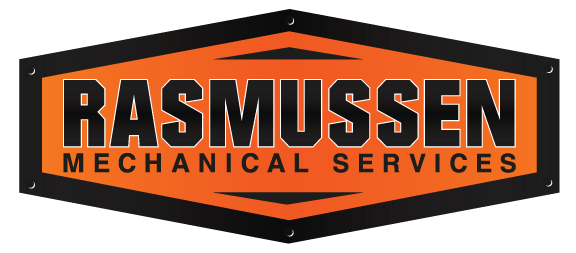Facility managers overseeing boiler systems must have a solid understanding of boiler pressure controls. These devices monitor and regulate steam pressure in a boiler to keep it within safe ranges. By automatically adjusting the firing rate or shutting off fuel when pressure gets too high, pressure controls protect equipment and personnel. This article explains the function of boiler pressure controls, the different types, how to set them, safety considerations, and tips for troubleshooting.
The Basics Of Boiler Pressure Controls

Boiler pressure controls act as automated sensors: they sense the internal steam pressure and take action to maintain it within desired limits. If pressure drops below the setpoint (indicating demand for more steam), the control signals the burner to ramp up. If pressure rises above the setpoint (indicating an oversupply of heat), the control will reduce the burner output.
Pressure controls also serve as safety devices. If boiler pressure climb too high, the controls will intervene to prevent overpressure. Most boilers have at least two levels of pressure control: one to handle normal operations and another to act as a safety limit. It is mandatory that automatically fired steam boilers have two pressure control devices.
- One governing the maximum operating pressure
- And a separate safety limit that stops the burner to prevent exceeding the boiler’s Maximum Allowable Working Pressure (MAWP).
The safety limit control is typically set to shut the boiler off before the pressure can exceed the vessel’s design limit. This control requires a manual reset to resume operation. By having multiple pressure controls with redundancy, any single failure is less likely to lead to catastrophic overpressure.
It’s worth noting that boiler pressure controls are distinct from pressure relief valves. A relief valve is a last-resort mechanical safety that releases steam if pressure gets too high. On the other hand, pressure controls work to control the burner. They should ideally keep the pressure well below the point where the relief valve opens. Properly functioning pressure controls ensure the boiler operates safely without ever lifting the safety valve.
In summary, boiler pressure controls continuously monitor and adjust pressure to meet load demands and enforce safety limits. This is a fundamental function for any commercial/industrial steam boiler system.
Types of Boiler Pressure Controls
Modern boiler systems use a combination of pressure control devices. Each plays a role in managing pressure under different conditions. The main types include:
1. Operating Pressure Control (Pressuretrol)
The operating pressure control (often known by the generic term pressuretrol) is the primary device that regulates steam pressure during normal operations . It is essentially a pressure-activated switch connected to the burner. When steam pressure rises to the control’s setpoint (the desired maximum operating pressure), the switch opens and turns off the burner. When pressure falls to the cut-in level (setpoint minus a differential), the switch closes to fire the burner back on. For example, an operating pressure control might be set to cut out at 100 PSI and cut back in at 90 PSI. This means it tries to maintain the boiler at roughly 90–100 PSI during operation. On smaller low-pressure systems (e.g. building heating), the settings might be just a few PSI (often 2–5 PSI range for comfort heating).
The operating control is an automatic reset device – it does not require manual intervention to re-enable the burner each cycle. It simply responds to pressure changes. Its primary role is to meet the steam demand while preventing the boiler from exceeding the normal operating pressure range. Importantly, if the operating control fails or is set incorrectly, the boiler could overfire. For this reason, the operating control is backed up by at least one other pressure control.
2. High-Limit Safety Pressure Control (Manual Reset)

Honeywell High Limit Pressure Control
High-limit controls are sometimes called “limit switches” or “safety cut-outs.” They are wired in series with the burner control circuit, just like the operating control, so that either device can stop the burner. The high-limit pressure control is a safety backup that guards against excessive pressure beyond the operating control’s range. This device is typically set at a higher pressure than the operating control and is equipped with a manual reset feature. Under normal conditions, the high-limit does nothing; it only activates if the pressure continues rising past the operating control’s shut-off point. If triggered, the high-limit control will cut power to the burner (causing a safety shutdown)and lock out the boiler. Someone will then need to investigate the situation and manually resets the control. This manual reset requirement ensures that the boiler cannot resume firing until someone has confirmed the pressure is back to a safe level.
In practice, the high-limit is set somewhat above the operating control’s cut-out. For example, if an operating control is maintaining ~100 PSI, a high-limit might be set around 110–120 PSI. The exact gap varies by system, but it must be low enough to protect the boiler’s design pressure. Crucially, the high-limit’s setting should never exceed the boiler’s MAWP or the safety valve setting. It’s good practice to clearly label these controls to avoid confusion, especially since their setpoints are different.
3. Modulating Pressure Controller (Firing Rate Control)
On many commercial boilers, especially where steam demand fluctuates, the burner doesn’t just cycle on/off – it modulates (varies its firing rate). In these systems, a modulating pressure controller is used. This control senses steam pressure and sends a proportional signal to the burner’s fuel/air control system. This signal will then throttle the firing rate up or down. Instead of waiting for the pressure to hit a cutoff, the modulating controller continuously adjusts the burner to hold a steady pressure. For example, if steam pressure starts to creep above the setpoint, the modulating control will drive the burner to a lower fire instead of shutting it off. If the pressure falls too low, it drives the burner toward high fire.
Classic modulating pressure controls often use a slide-wire potentiometer mechanism or electronic pressure transducer. As pressure changes, the controller outputs a corresponding electrical signal to a modulating motor or actuator on the burner fuel valve/damper. Modern systems may use digital controllers or PLC-based logic, but the principle is the same – proportional control of burner firing based on pressure .
When using a modulating control in combination with on/off controls, the settings must be coordinated. A typical setup might be: the modulating controller maintains, say, 8–10 PSI range. The operating pressuretrol is set slightly above that (maybe 12 PSI) to serve as an on/off limit if modulation isn’t enough. Finally, a high-limit is set at 15 PSI as the safety shutoff. Proper calibration of the modulating control is important.
4. Low-Fire Hold (Warm-Up Pressure Control)
Another pressure-related control often found on larger boilers is the low-fire hold (sometimes called a warm-up control). This is a special control that keeps the burner at low fire until the boiler has reached a minimum pressure or temperature on startup. The purpose is to avoid thermal stress. A boiler should not go to high-fire on a cold start or when it’s at very low pressure. This would cause rapid heating and result in thermal shock. The low-fire hold pressure control senses when the boiler has built a small amount of pressure. Only after reaching that threshold will it allow the burner to release to modulating or higher firing rates. Essentially, it’s like a “warm-up governor” – holding the boiler at idle or low flame until it is ready for full load.
For example, a manufacturer might specify that the boiler must reach 5 PSI before advancing from low fire. The low-fire hold control would be set to 5 PSI. Below 5 PSI, it forces the burner to stay at minimum firing rate (regardless of heating demand). This gently bring the system up to temperature/pressure. Once that pressure is achieved, normal modulation can commence. Low-fire hold controls help prolong boiler life and prevent damage to boiler tubes, refractory, and other pressure parts caused by rapid temperature changes.
Adjusting Pressure Control Setpoints
When adjusting any pressure control, make changes gradually and monitor the results. Use a calibrated pressure gauge (or the boiler’s gauge if known accurate) to verify that the controls trip at the intended pressures. It’s not uncommon for older pressuretrols to have some discrepancy between the dial setting and actual trip point due to calibration drift. For critical settings, you may intentionally test the cutoff to see at what point the control actually opens or closes. Always restore settings to normal after testing. Document the setpoints of all controls in your boiler log so that future inspections can quickly verify if anything has changed. A best practice from the National Board is to visually check pressure control setpoints daily to ensure they haven’t been tampered with or drifted.
Troubleshooting Pressure Control Issues
Here are some common problems facility managers might encounter with boiler pressure controls and troubleshooting tips:
 Boiler Over-Pressurizing (Pressure Too High)
Boiler Over-Pressurizing (Pressure Too High)
If the boiler pressure is climbing above the normal range and the burner isn’t shutting off, immediately check the pressure controls. Possible causes include a failed operating pressuretrol (stuck contacts or clogged sensing line) or a mis-set control (setpoint turned too high). First, verify the actual pressure with an independent gauge. If the operating control should have tripped but didn’t, try lowering its setpoint to see if it responds. Ensure the pigtail is not blocked – a blockage can prevent the control from seeing the true pressure, causing the burner to run unchecked.
If the high-limit control also failed to trip, shut the boiler down and do not fire it again until controls are repaired. In many cases, replacing a faulty pressure control is the safest solution. Always investigate an unexplained high-pressure condition thoroughly; it indicates a serious malfunction if both the primary and safety control failed to stop the burner.
Frequent Short-Cycling
Short-cycling is when the boiler turns on and off too frequently, which can reduce efficiency and strain components. If pressure rises and falls rapidly causing quick cycles, the operating pressure control settings may be too tight. Check the differential setting – if it’s very narrow, the burner will cut in and out with only a tiny change in pressure. For example, a differential of 1 PSI on a high-fire boiler might be too small, causing rapid cycling. Try widening the differential or lowering the cut-out setpoint a bit to increase the off-period.
Another cause could be that the boiler is oversized for the load, producing steam faster than the process can use it. In that case, a modulating control or a pressure accumulator might help even out the cycles. Also verify that the modulating pressure control (if used) is tuned correctly. If it’s not driving the burner low before the cut-out hits, the burner might be hitting high fire then shutting off abruptly. Proper modulation should keep the burner on longer at low fire rather than frequent full on/off cycling.
High-Limit Trips Frequently
If the manual reset high-limit is tripping often, that means the operating control is not preventing high pressure as it should. The high-limit should only trip rarely, if ever, under normal conditions. Frequent trips suggest the operating pressuretrol’s setpoint might be set too close to the high-limit, or it’s malfunctioning. Check that there is sufficient difference between the operating control cut-out and the high-limit setting. (There should be a clear gap; e.g. operating at 10 PSI, high-limit at 15 PSI on a low-pressure system). If settings are correct, test the operating control function – it may need cleaning or replacement.
Also consider if a sudden drop in steam usage is causing pressure spikes that overshoot the operating control. For instance, a process valve closing could cause a quick rise. In such cases, slightly lowering the operating pressure or adding a controlled bleed-off (or simply anticipating the load change) can help. Always find the root cause before resetting the high-limit and restarting the boiler.
Inaccurate Readings or Setpoint Drift
Over time, a pressure control might not trip exactly at its dial setting due to calibration drift or wear. If you suspect this, compare the control’s action against a trusted gauge. You should always verify accuracy yearly by watching the control trip against an NIST-traceable gauge. Also check the pressure sensing line for any fluid level issues. If the pigtail lost its water seal, steam could be directly hitting the sensor and affecting it. Refill the pigtail and see if consistency returns.
Burner Will Not Fire (No-Start due to Pressure Control)
If the boiler is not firing at all, the pressure controls could be keeping it off. This is common on restart after a trip: if the high-limit tripped, the burner won’t start until you reset the manual limit switch. Always check the high-limit reset button if the boiler stays off unexpectedly (and remember to only reset it after confirming it’s safe).
Another scenario is if the operating control’s setpoint is set lower than the current system pressure. If the pressuretrol is set at 5 PSI, and the boiler is still at 8 PSI from a previous run, the burner will stay off until pressure drops. In a multi-boiler system, ensure the common operating control (if used for a header) isn’t holding all boilers off. Also, some low-fire hold controls will prevent firing (or limit to pilot only) if the conditions aren’t met. So if a boiler won’t ramp up, check that the low-fire hold isn’t engaged due to a false reading. (ie. a failed sensor thinking the boiler is “cold”)
Erratic Modulation or Hunting
If you notice the burner oscillates (hunts) or has trouble maintaining stable pressure, and you have a modulating pressure control, the control loop may need tuning. This could involve adjusting a proportional band or gain setting on a digital controller, or tweaking the linkage on a mechanical modulating pressuretrol. Ensure there is no sticking in the modulating actuator and that the control is properly spanned for the pressure range. Sometimes, installers leave the modulating control at factory defaults which may not be optimal for the site conditions. A well-tuned modulating control should keep pressure steady without frequent overshoot. If unable to tune it out, consult the burner/boiler manufacturer or a control technician.
Choosing Practical Setpoints
Follow this top-down sequence and record every value in your logbook:
- Modulating main: a few pounds over the process minimum.
- Modulating differential: as broad as the plant can tolerate without starving end-users.
- Operating cut-out: roughly 5–10 psi higher than modulating top-end (or proportionally higher on high-pressure boilers).
- Operating differential: wide enough to avoid short cycling but narrow enough for reasonable recovery—often 10 %–20 % of setpoint.
- High-limit: another 5–15 % above the operating cut-out yet comfortably below relief-valve lift.
- Low-fire-hold: set strictly by boiler design to prevent thermal stress.
Installation and Maintenance Essentials
-

Image from NBBI
Use a water-filled siphon loop (pigtail) for every control. Live steam must never strike the bellows directly. Blow down or brush out pigtails annually; a plugged loop blinds the control.
- Separate sensing lines whenever fittings allow. One clogged tapping then knocks out only one control, not all four.
- Calibrate at least yearly with a test gauge or regulated air source. Springs weaken and linkages loosen over time.
- Daily walk-through: glance at the dial settings, check that the high-limit reset is not tripped, and verify the mod-motor travels smoothly through its range.
- Handle mercury switches with care. Many older pressuretrols still use a mercury bulb; swap to mercury-free when you overhaul the system and dispose of the old units legally.
Conclusion: Keep Boiler Pressure Controls Front-and-Center
Reliable boiler pressure controls follow a clear chain of command. First, the Modulating Pressure Controller (firing-rate controller) modulates the burner to match load. Next, the operating pressure control acts as the first high-pressure cut-out; it is not the point where the boiler should cruise. A manual-reset high-limit then stands guard just below the relief-valve lift, stopping any run toward MAWP. Finally, the low-fire-hold switch keeps a cold boiler in low fire until it reaches about 2–3 psi on low-pressure systems or roughly 100 psi on large water-tubes. This prevents thermal shock.
Always adhere to recommended safety practices: provide redundancy, never bypass or “jerry-rig” a pressure switch, and respond immediately to any abnormal behavior. With well-functioning pressure controls, a boiler can meet steam demands reliably while staying within safe pressure limits . In the end, keeping a close eye on these controls is a key part of boiler management. It protects your equipment, your energy budget, and most importantly, your people.
Overall, a solid grasp of boiler pressure controls and their operation will help any facility manager ensure safe, efficient steam supply.



 Boiler Over-Pressurizing (Pressure Too High)
Boiler Over-Pressurizing (Pressure Too High)

